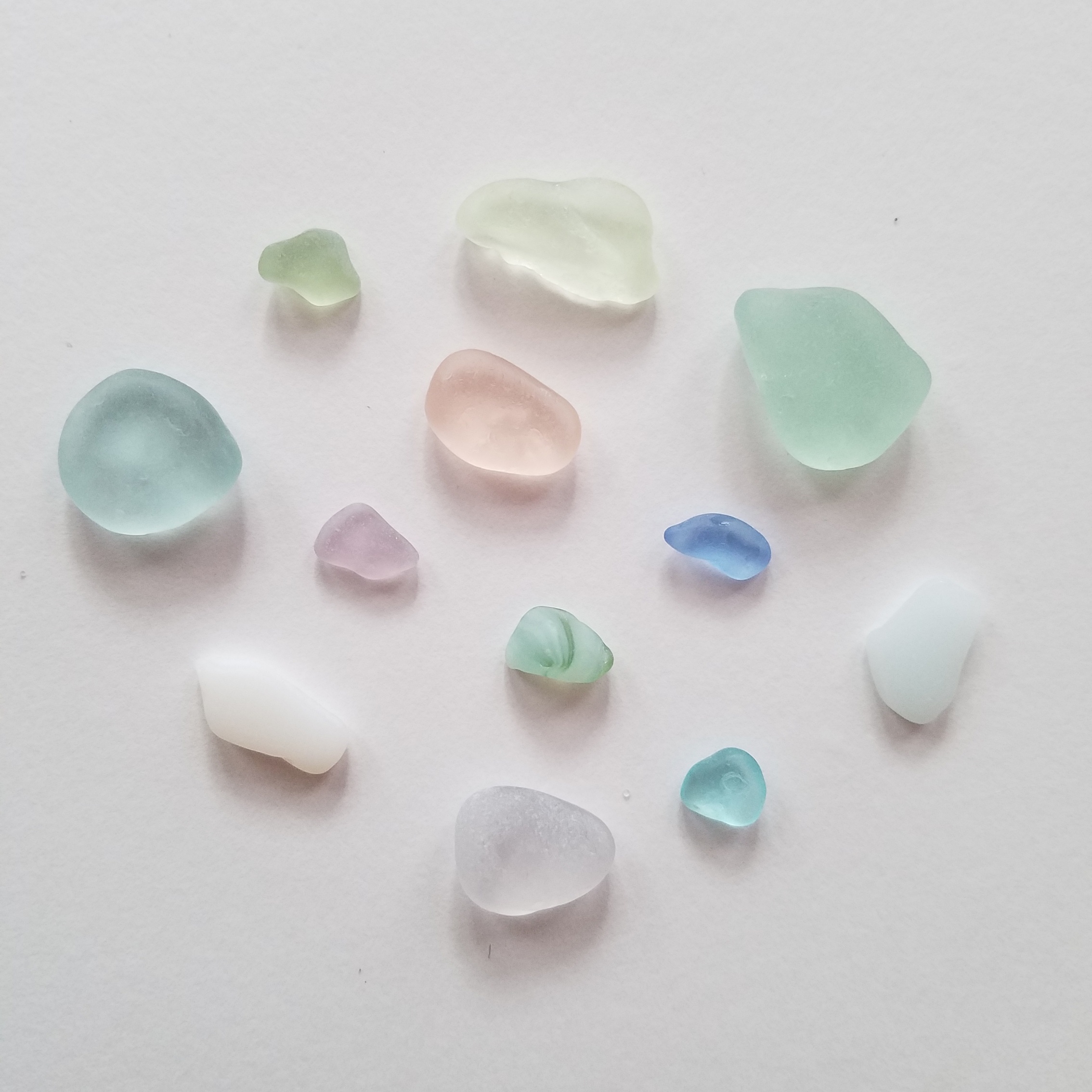

you collect what?
most of the time i've lived in the city i've been near the beach. even though you can't really swim or lay out on the sand most of the year, i like living near it so i can take nice long walks and look at the water.
over quarantine, i went on a lot of walks. eventually i started picking up pieces of sea glass and sea pottery while i walked up and down the shoreline-- pieces of discarded glass, stoneware, and ceramic that ended up in the lake and got tossed around for decades until they became smooth. technically i should say "beach glass", since it's not from the ocean. but anyway, it became a grounding, peaceful, no-thoughts-head-glassy hobby.
some friends have asked how i find things and what i look for, so i thought i'd put the few things i know together here for anyone who's curious.
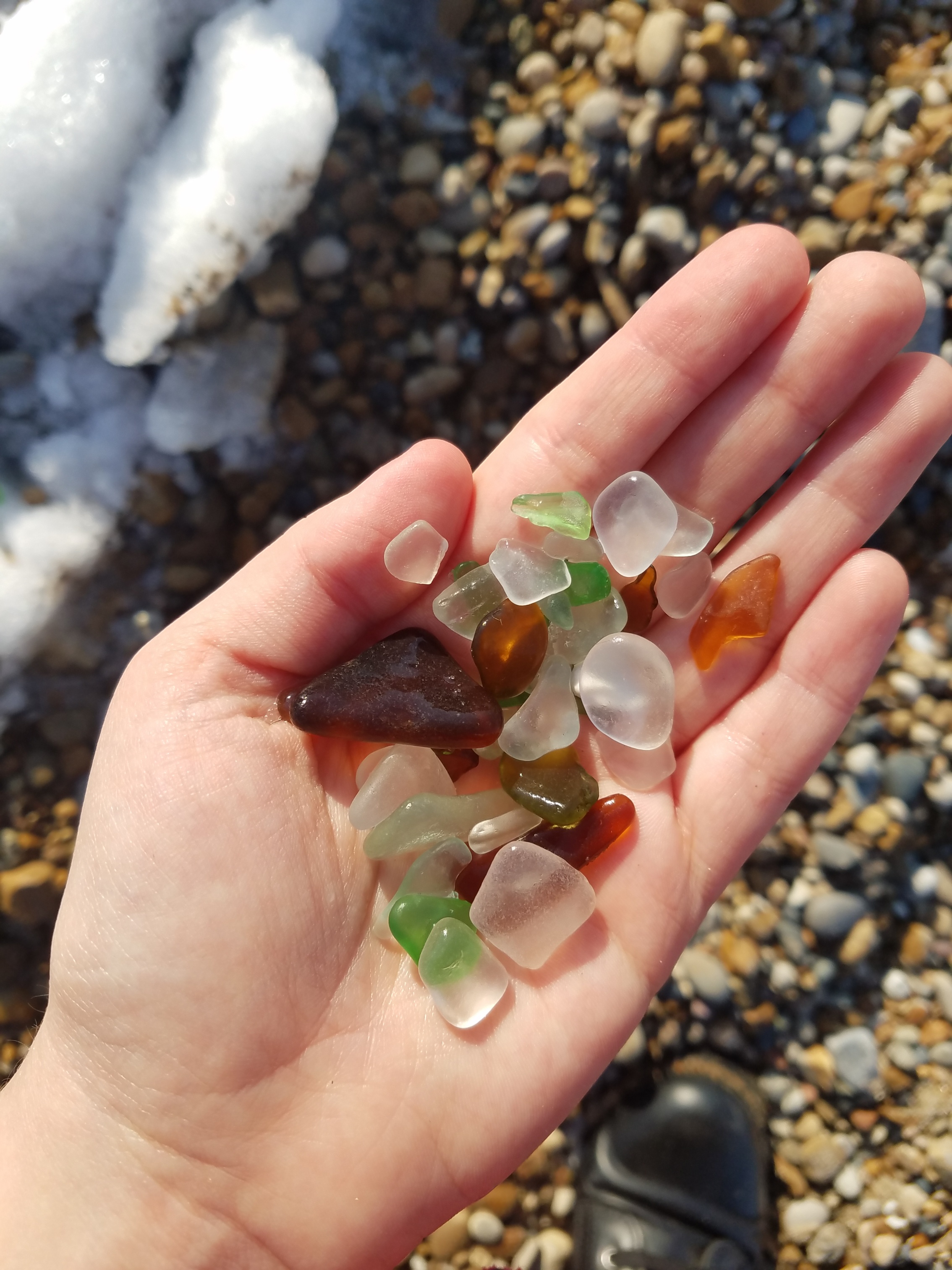
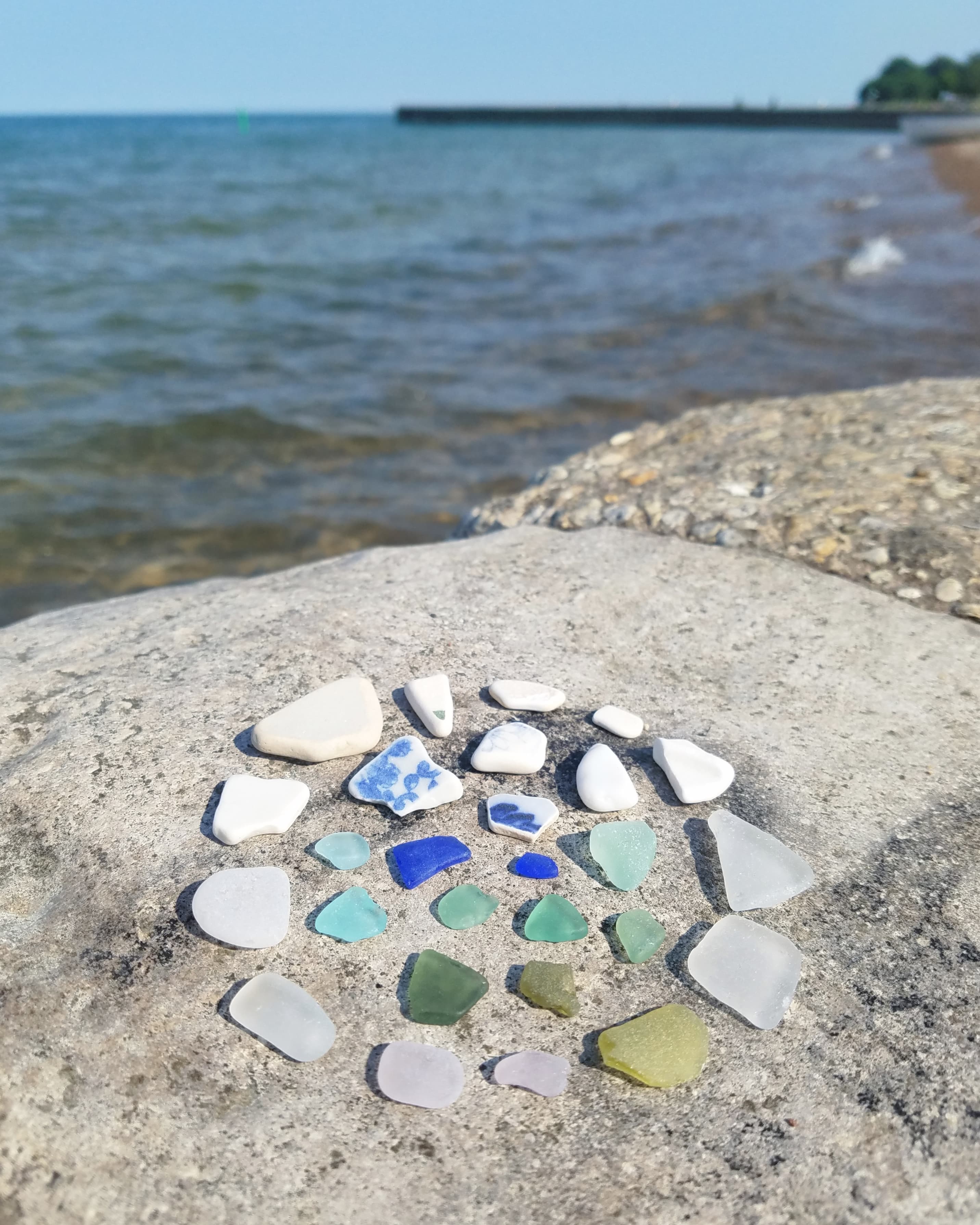
tips
where to go: sea glass can be found on any beach, but you'll have the most luck at beaches where pebbles and rocks often wash up. long stretches of rocky beach aren't the best when you want to lay in the sun or go for a swim, but they're great for digging around in. get a pair of water shoes for the summer and waterproof boots for colder months.
rock piles: where rock piles are changes with the waves. you may find an amazing rock pile one day and go back the next only to find it's all washed away! generally, the size of the rocks in the pile is related to the size of sea glass you'll find in it, so if you're looking at a pile of teeny tiny pebbles, you may want to look for a pile with something slightly bigger. with that said, piles of sizeable rocks won't usually bring up same-sized pieces of glass, just bigger ones. there are no and fast rules though! bigger pieces can crop up anywhere!
best weather: when a storm comes through, waves kick into high gear and churn up all sorts of debris, including glass. powerful waves tend to bring up bigger pieces than smaller waves, so get out as soon as you can once the storm passes! however, those big waves (and the new stuff they churn up) can last for hours after the storm, so keep that in mind too. google "(body of water) wave report" for your area to see how big the waves are.
when to go: i've picked up my favorite finds anywhere between sunrise and sundown. early risers get the first pick of whatever was churned up from the waves the night before, but no worries if you're not an early riser-- the waves are moving all day! if there are people on the beach, their feet are kicking up things all day too.
on light: it seems like the indirect light of late morning and early evening (as opposed to high noon) makes it easier to spot pieces. if it's too bright, things just blend into each other especially when they're all glistening and wet. cloudy days are also a great time to look for the same reason.
spotting glass: it's hard to spot sea glass at first. when it's dry, it has a frosted appearance that can obscure its color and blend into the rocks. when wet, the colors are more vibrant (excluding clear glass). with time spent looking, you'll start training your eyes to recognize it.
where to look: it's tempting to look where the rocks and sand meet the water, but remember that the tides change where debris is dropped on the beach! in addition to the shoreline, look to see where the high water mark is and check along there. it also doesn't hurt to check a random pile of rocks that seems too far in to have touched water recently. i've found plenty of good things in those!
colors: most of the glass you'll find will be clear, brown, and green since those are the colors of mass-produced glass bottles. here's a link to a sea glass rarity chart so you can see which colors are the hardest to find. this page has some more info on where these colors typically come from, along with some additional finds like milk glass and marbles!
age: the more frosted and smooth the piece is, the longer it has been tumbling in the water. thickness is another good indicator of older sea glass, since glass bottles themselves used to be a lot thicker. if you see bubbles inside the glass, that's a good indicator as well. now that i have frankly too many pieces of glass, i typically only keep pieces that are completely smoothed on all sides with no rough edges or shiny bits. i throw pieces that don't seem "cooked" enough back into the water.
woes: only finding small pieces? same, babe! beachcombing for glass is getting harder as the years go on. recycling practices have gotten better in recent decades, with fewer companies dumping trash into water sources (good!). mass-produced objects that used to be made of glass are now usually made with plastic instead, decreasing the overall amount of glass waste being produced nowadays (err, less good). so savor those big finds whenever they come!
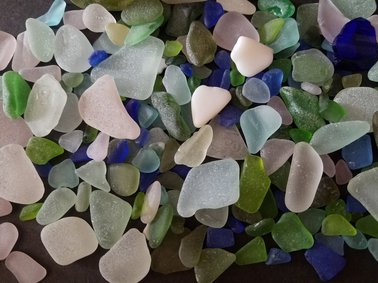
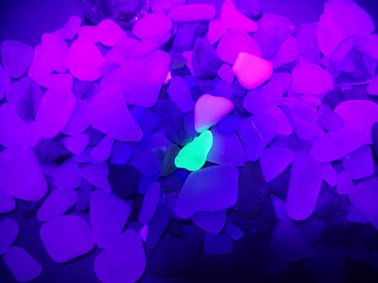
misc.
UV glass: some glass was made using flourescent materials either to create different decorative colors or for practical purposes (ex: tail lights). it's pretty hard to tell with the naked eye if a piece is flourescent, but it's pretty clear if you have a blacklight! you can learn more about UV glass at this link here. you can also buy a UV flashlight to hunt for glass at night.
stone pottery: pottery can be tricky! a lot of it blends really well into surrounding rocks. look for things like uniform thickness, straight lines and angles, or a color in the middle of the piece that fades toward the edges (often black or tan with stone pottery).
porcelain and ceramic: these guys are often brighter than the surrounding rock. similar with glass, it's easier to tell the difference in indirect light. look for the same things as above as well as a cracked finish (usually from a glaze). i've noticed that since porcelain and ceramic are lighter (weight-speaking) than rocks, they tend to get tossed around more by waves. if you see a piece of something moving faster and getting pushed around more by the waves, pick it up! also, if you spot a piece that looks like it's plain white, flip it over! it might have a really beautiful design on the other side!
rocks: you'll probably end up picking up some neat looking rocks while you're out too, and then getting very disappointed when they don't look as cool once they're dry. however, fear not! here are some different ways to make your rocks look shiny again and give them back their color. i recommend these guides here and here for fellow lake michiganers if you're curious about identifying different rocks.
plastic: colored plastic will also quickly become your enemy, promising a rare red or orange piece but being having an air about it that seems too good to be true. pay attention to its weight to help distinguish it from glass. if you have a questionable piece, put it in a bowl of water with some glass pieces and make a little water tornado with your hand-- the plastic will separate from the glass due to the weight difference.
animal things: if you decide to collect a crab claw like the ones below, you might want to soak it in an acetone/water mix so it doesn't stink up your beach collection... (whoops!). if you find any bones you'd like to keep, here are a couple ways to clean and whiten them without using bleach.
driftwood: if you want to collect small pieces of driftwood, soak them in water mixed with a bit of baking soda to clean them and remove the tannins.
random: i love watching videos of this guy beachcombing! he's been doing it for 13 years and has studied a lot of glass history, and he gives some really neat context behind his finds. he's also just very charismatic!


happy hunting!
back